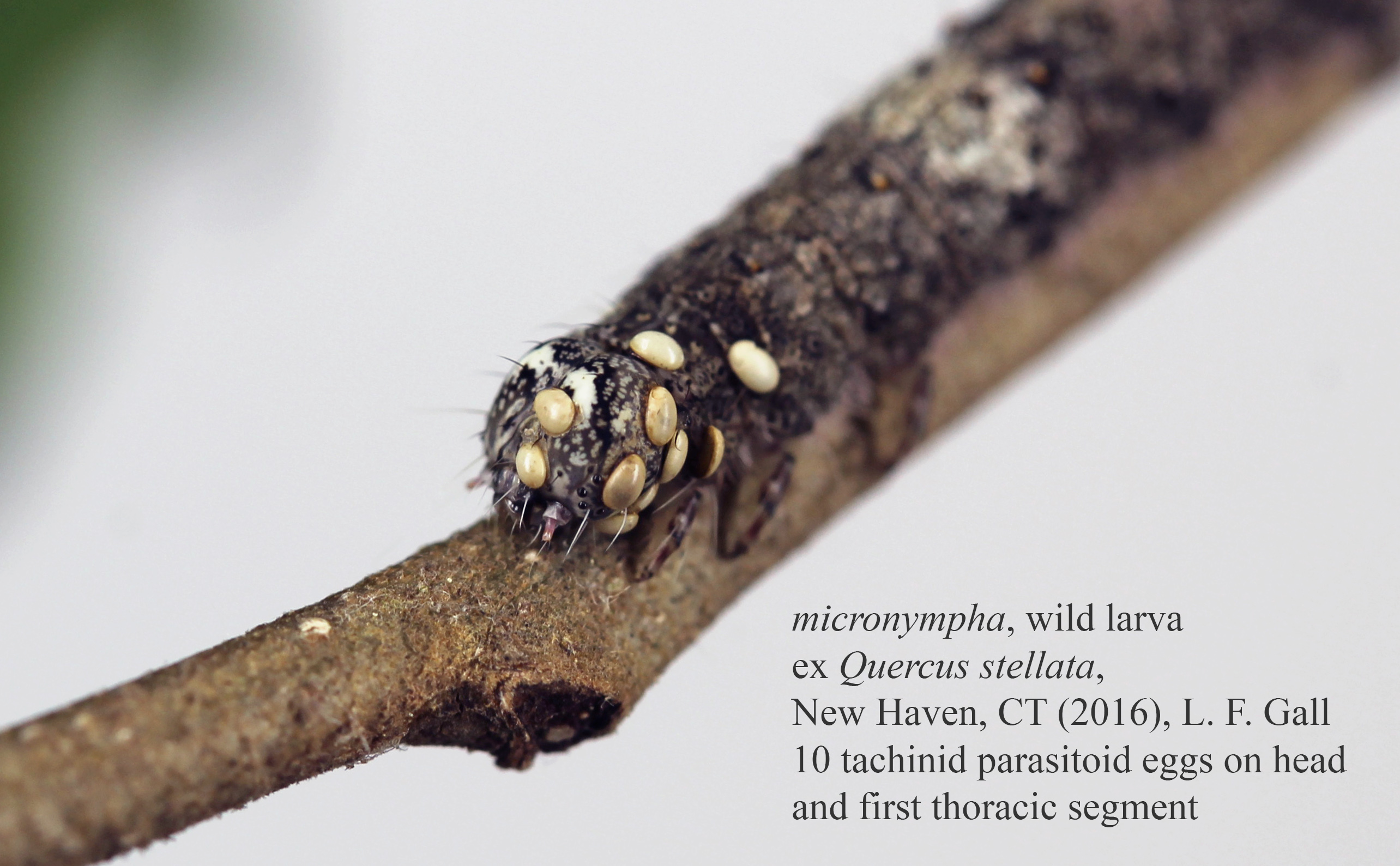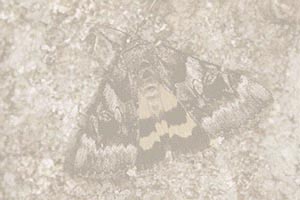 Catocala micronympha
Catocala micronympha
Guen‚e, 1852
One of the more commonly encountered of the smaller oak-feeding Catocala species as a larva. Typically
with a prominent white bump/tubercle on A5 and a grayish ground color with substantial contrasting black/darker mottling over
the body, and
modest white chevron on the head capsule near the vertex. Larvae of
connubialis
are similar but have a
substantially larger white chevron on the head capsule (with more extensive white also above the mandibles). Larvae
of
similis
are likewise close, but have
little to no white chevron around the vertex as in micronympha, the ground color is often browner and
the darker mottling lacking or not as prominent, and the darkened A5 saddle patch is subdued and typically
not as contrasting.
Body size and coloration of
minuta can approach micronympha, but
head capsule of minuta lacking white chevrons and with substantial darkening behind the vertex toward T1 and
two prominent dark dots on facial lobes.
Wild larvae of micronympha are recorded from a wide variety of Quercus although most of the records we have
are for species in the white oak subgenus Quercus (Lepidobalanus).



|


